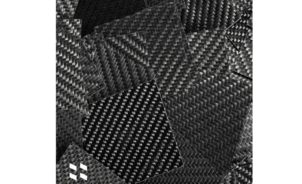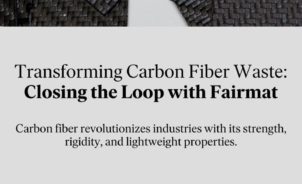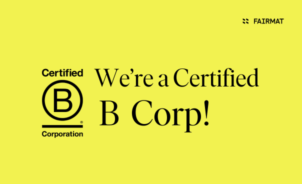The European Union (EU) dropped the “C-BAM!” in Dec 2022. And it is our guess that so far, CBAM (Carbon Border Adjustment Mechanism) must have altered many ‘2023 manufacturing checklists’, as it should.
If your business isn’t CBAM-ready or you lost us at ‘CBAM’ itself, read the article for answers to:
- What is the Carbon Border Adjustment Mechanism?
- Why CBAM came into play?
- What is Carbon Leakage?
- How can businesses prepare themselves for CBAM?
So, what is the CBAM proposal?
The Carbon Border Adjustment Mechanism is how the EU plans to kill two birds with one stone – i.e., fueling the EU’s ambitions to become climate-neutral by 2050 while motivating the partner countries to join them in this venture.
CBAM will ensure that all carbon emissions from industrial production in the EU or abroad are paid for. CBAM will tax carbon-intensive imports to match the carbon price of their domestic production.
Why the Carbon Border Tax?
CBAM’s precursor, EU ETS (Emissions Trading System), assigned emissions allowances to installations based on the ‘cap and trade’ principle. ETS could successfully promote low-carbon initiatives and cost-effectively drive emissions reductions. But this legislation remained avoidable (yes, ‘avoidable’) and resulted in Carbon Leakage.
Understanding Carbon Leakage
Naturally, the loophole to avoid any legislation is for businesses to move carbon-intensive production abroad, where lenient policies can be bent to their advantage. This is called ‘carbon leakage,’ and it is greatly undermining the EU’s emissions-reduction efforts.
To conclude, CBAM is an offset to ETS’ escape clause.
How does the mechanism come into play?
CBAM will phase in gradually to allow a “careful, predictable, and proportionate transition for EU and non-EU businesses.”
Its initial scope applies to the most-polluted industrial sectors: cement, iron and steel, aluminum, fertilizers, electricity, and hydrogen.
When fully phased in, its enlarged scope is proposed to include direct and indirect emissions generated during the production process of the imported goods.
Importing goods to Europe will require declaring the quantity of goods, their ‘embedded’ emissions, previously acquired CBAM certificates, and declarations, whose price will depend on the auction price of ETS allowances. The certificates will be uncapped to encourage companies to adopt greener production processes.
What can businesses do about this new EU directive?
Christian Heinrich commented on a LinkedIn article on CBAM that, “Decisions now already affect your margins,” referring to the urgency with which companies should start rethinking their operations and calculating what the future with CBAM will mean for them.
The definitive system of CBAM will not be fully operational before 2026. This might give businesses ample time to think about another way out of the taxes.
But this buffer will make all the difference.
Escaping taxes cannot be an option this time. Nevertheless, CBAM will help set industries on their greenest, cleanest path ever.
We’ve listed ways in which businesses should approach the upcoming changes for the best possible outcome.
How can businesses keep up with the upcoming regulatory uncertainty?
- Proactivity:
- Industrialists can choose to be proactive this time around by assessing how CBAM’s enlarged scope will impact its revenue and operations over the years. E.g., calculating embedded emissions (emissions that occur in the production of goods but are not physically incorporated in the goods.)
- Deep-diving into what products will fall under CBAM, their sourcing and volume, understanding their emissions, the impact of the carbon-pricing measures, etc., are signs of proactive thinking.
- Cost-effectiveness:
- To be cost-effective is to improve or innovate the products and their production for real bottom-line savings. When businesses can no longer avoid levies, they will have to become environmentally sound by optimizing the current resources, reducing operating costs, and thus paying less in the future.
- Fairmat assists manufacturers in sectors like mobility, sports, or electronic goods to reduce their overall costs by optimizing their manufacturing process. We not only eco-design carbon fiber composite (CFRP) materials, but we enable businesses to do so by themselves, using our proprietary software and robotic manufacturing cells.
Check our Enterprise Offer to understand how Fairmat has thought this through to help you manufacture economically and sustainably.
- Opportunity in everything:
- CBAM allows businesses to assess the competition and stay one step ahead by modeling their business for greater compliance.
- Fairmat has long-term agreements with Hexcel and Dassault to recycle their carbon fiber composite wastes. By choosing to recycle early on, these enterprises are already past the anticipated risk of change in operations, and on the track to effective compliance.
- Alternatives:
- CBAM also incentivizes businesses to switch to sustainable alternatives – suppliers, technologies, materials, and even processes. Businesses now have the option to partner with low-carbon product suppliers.
Learn more about how to use the Life Cycle Assessment (LCA) tool to choose suppliers sustainably and compare the impact of your product on the environment to that of the market alternatives.
For example, using simplified LCA results from the report, we found that Fairmat’s Recycling process has 9 times or even lesser carbon emissions compared to other alternative waste management methods.




